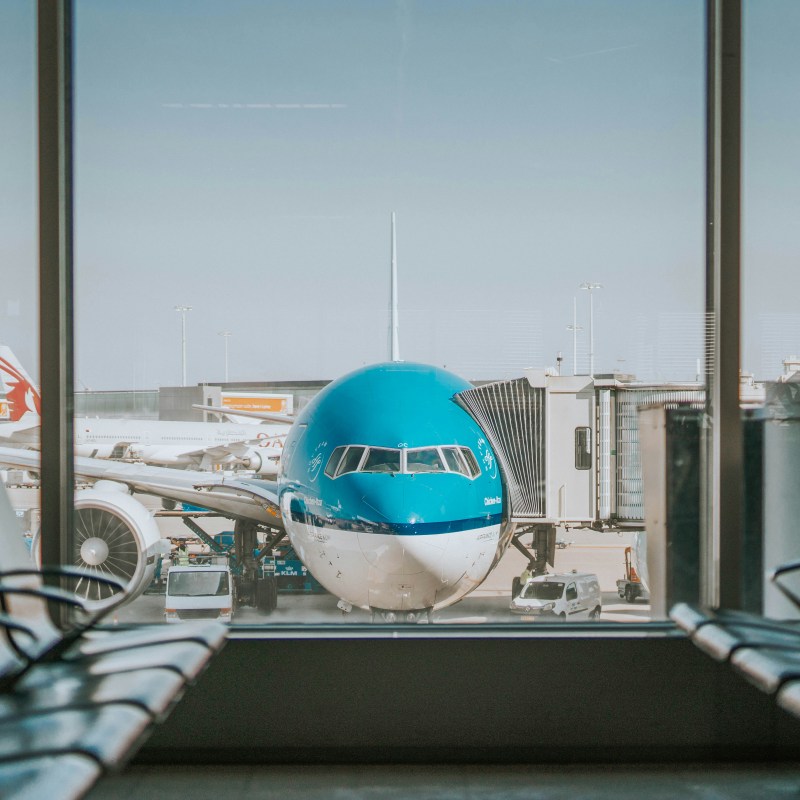
Advice on how to survive multi-leg air travel changes depending on who you ask.
Videos by TravelAwaits
The most difficult part? Making connecting flights.
Even an hours-long layover doesn’t mean you’ll make your connecting flight if disaster strikes. And even with the new Fly Rights regulations in the US—which protect fliers against cancelations and delays—thousands of passengers are still going to miss their connections this year.
The good news? There’s an easy and direct way to avoid stressful layovers.
The bad news? You’re going to need a lot of patience… and a new skill set.
That skill set is knowing how long to schedule layovers. It’s not just about the airline you’re flying with or how long you have to board your connecting flight. You also need to consider factors like meals, airport size, customs, and more.
Want to know the laws of the layover? Here’s what you need to know to never miss a connecting flight again.
The basics: factors that affect how long your layover should be
The main factor impacting your layover length is whether you’re making a domestic versus international flight. But before we get to that, there are a few foundational rules that should inform how you think about layovers and connecting flights.
Here’s what to think about:
- Booking. Many travelers choose to book on deal sites to save money. If that’s the case, make sure you’re selecting a flight with an adequate layover. Don’t let the deal site decide what layover time works for you—many underestimate the time necessary, in my experience.
- Airport size and reputation. Some airports are the size of small villages. Others are regional and compact. If you’re facing a layover at a major international hub, you need to allow enough time to take trains to other terminals, collect your baggage, and more.
- Air traffic control. Yes, you should also do a bit of research into air traffic control factors including understaffing and strikes—including at your final destination. A lack of air traffic controllers is regularly impacting flights at airports around the world.
- Physical health. If you’re jet-setting across the globe, you might want to set aside time to eat a healthy(ish) meal before getting on another flight. While airport food isn’t known for being Michelin-quality, airport restaurants are usually a better bet than airplane food.
- Baggage collection. If you’re switching airlines and need to recheck your bag, then be sure to leave enough time to collect your baggage and check it back in.
- Plan a few backup flights. If you’re flying for a major event, industry professionals recommend having a few spare backups in terms of connecting flights. You can look up these flights before taking off from your origin. This allows you to get where you’re going in case disaster strikes.
- Baggage and group size. The more luggage you’re carrying, the more time you need. The same for the number of travelers. More people = more time.
- Weather. Some airports are prone to bad weather, which regularly causes flight delays and cancellations. When you research an airport’s size and reputation, set aside a few minutes to check on its weather patterns. Hurricane season, anyone?
The international layover: how long should it be?
There’s no fast-and-easy rule for how long domestic or international layovers should be. (Boo!) The main difference relates to customs.
Keep in mind that international flights might include long waits at customs lines. Just like airports have reputations for slow security and long walking distances, they also have a reputation based on their customs experiences.
Conservatively, I’d recommend putting aside an hour just for customs—especially in Europe. Brits are some of the most frequent travelers throughout Europe—and they’re now sharing lines with American tourists in customs thanks to Brexit.
In other words, lines might be longer than you think, even in regions where international travelers are a common sight.
The minimum recommended time for an international layover is 2-3 hours, but a more conservative layover time would be around 5 hours.
The domestic layover: how long should it be?
Domestic layovers are a lot less stressful than international connections.
That being said, domestic flights across the US are regularly delayed thanks to a variety of factors—all of which are outside of your control.
Bafflingly, US airlines recommend a measly 45 minutes for a layover. The issue here isn’t whether you can make it from one gate to another during that time—that seems pretty manageable to me.
The issue is that 45 minutes doesn’t protect you from delays at your origin. That’s the main culprit here for missing domestic connecting flights.
It’s especially problematic if your second flight is international, as border-crossing flights usually take off from different terminals than domestic ones. In some cases, you might even be required to go through a secondary security check.
To give yourself enough time to make up for any delays on your flight from your origin, the minimum recommended time for a domestic layover is 3-4 hours.
